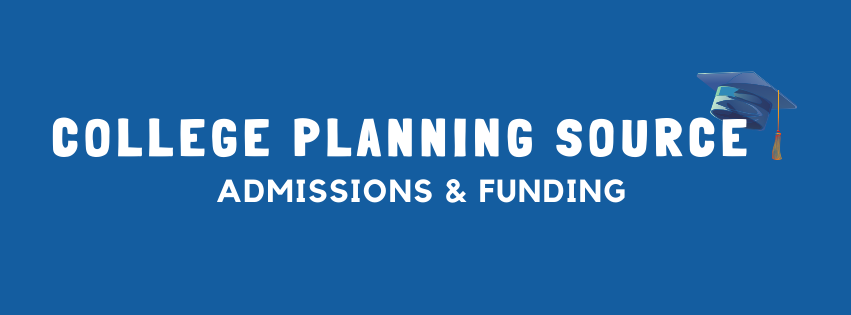-
Exploring and Selecting Colleges
- Admissions Stats
- Building a Balanced & Final College List to Apply to
- College Campus Visits
- Community College Pathway
- Demonstrated Interest
- Top Questions to Ask Pre-Med College Advisors/Counselors
- Top Questions to Ask the Department You’re Interested in Majoring In
- Top Questions to ask the Pre-Law College Advisors or Counselors
- Western Undergraduate Exchange (WUE) Program Schools
- Campus Visits - How to make the most of them
- Honors Programs at Colleges
- How to Create a Balanced College List
- College Spotlight: University of Wisconsin
- Understanding Early Action, Early Decision, and Restrictive Early Action: Making the Right Choice
- Researching Colleges: Tools to use to learn more about each college on your list.
- How to Sign Up for College Tours: In-Person and Virtual Options
- Visiting Colleges And Discovering a Hidden Gem
- Show all articles (2) Collapse Articles

When it comes to applying to colleges, high school students and their families often face a complex and stressful process. An essential strategy for managing this stress and increasing the chances of a successful admission outcome is creating a balanced college list. This article will explain what a balanced college list entails, define the categories of likely, target, reach, and far-reach schools, and guide constructing a well-rounded list.
Definitions of College List Categories
1. Likely Schools (Safety): Likely schools are those where a student’s academic credentials (GPA, test scores, etc.) exceed the school’s average for admitted students. Admission to these schools is highly probable; hence, they are often referred to as “safety” schools. Importantly, a safety school should also be a place where the student would be happy to attend.
2. Target Schools (Match): Target schools are colleges where a student’s academic credentials are well-aligned with the averages of admitted students. These schools represent a reasonable match, meaning the student has a good but not guaranteed chance of admission.
3. Reach Schools: Reach schools are institutions where a student’s credentials are below the average ranges of the admitted student profile. Admission to these schools is less certain, and the student should be prepared for a competitive process.
4. Far-Reach Schools: These are schools where the student’s academic credentials fall significantly below the school’s averages for admitted students. Admissions at far-reach schools are highly unlikely but not impossible, so these applications should be considered long shots.
Crafting a Balanced College List
A balanced college list typically includes a mix of likely, target, reach, and possibly far-reach schools. The purpose of this balance is to optimize opportunities for admission while also pursuing some aspirational choices. Here’s how to do it:
1. Number of Schools: Students should consider applying to around 10-15 schools, depending on their specific circumstances and capacity to manage applications.
2. Distribution:
- Likely Schools: At least 3 schools. These are your safety nets, so ensure they are places you would be genuinely excited to attend.
- Target Schools: 4-8 schools. These schools likely fit your profile well and represent a good match between your credentials and what the schools typically look for.
- Reach Schools: No more than 5 Reach schools including the Far Reach schools. These are more competitive but still within the realm of possibility.
- Far Reach Schools: No more than 5 Reach schools, including the Far Reach schools. Only include these if you are truly passionate about the programs offered and are willing to face very slim odds.
Importance of a Balanced List
Having a balanced list ensures that you are not putting all your eggs in one basket. It helps manage expectations and broadens your possibilities. Applying to only reach or far-reach schools can lead to disappointment and limited options, while only applying to likely schools might leave you wondering what could have been if you had aimed higher.
Moreover, a balanced college list encourages students to realistically assess their own academic standing and potential for growth. It also allows students to dream big while keeping a practical mindset. This approach ensures that during decision time, you have a range of possibilities to choose from, which can reduce anxiety and increase satisfaction with your final choice.
Pro Tip: Do Not Cast TOO Wide of a Net
By concentrating on a more targeted list of schools, students can invest more time and effort into each application, enhancing the quality of their essays and materials. This focused approach reduces the workload and stress associated with managing numerous applications and allows for deeper engagement with each chosen school. It also promotes a more strategic application process, where students select colleges that genuinely meet their academic and personal preferences.
A balanced yet concise college list ensures that students are realistic about their chances while still reaching for their aspirations. It mitigates the risk of disappointment and provides a spectrum of opportunities, making it more likely to receive positive admissions results. It’s about quality over quantity—putting forth the best possible applications to a select few colleges rather than a mediocre effort across many.
Final Tips
- Research thoroughly: Make sure each category of school on your list offers the programs, activities, and community that fit your interests and goals.
- Visit if possible: Experiencing campus life first-hand can significantly impact your decision and help you gauge if the school feels right for you.
- Keep deadlines in mind: Organize application timelines for each category, as they might differ.
Creating a balanced college list is more than a tactical move in the college admissions game; it’s about setting yourself up for success by finding the right fit and maximizing your future educational opportunities.
Ready to get some guidance? Schedule a College Planning Assessment today!
Want college planning guidance delivered to you?
Sign up for our Counselor’s Corner Newsletter to receive helpful information and tips for
both parents and students on navigating the college admissions journey.



